(Version 5, experimental, CFSv2-based, weekly, 0.5x0.5-degree spatial resolution)
Alert Levels 1 and 2
(Weekly Outlooks from Weeks 2 to 15 and often up to Week 20 were used in deriving the Four-Month Bleaching Outlook.)
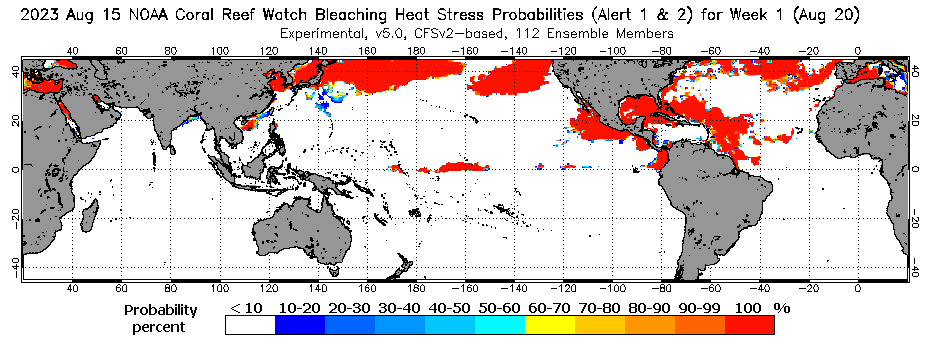
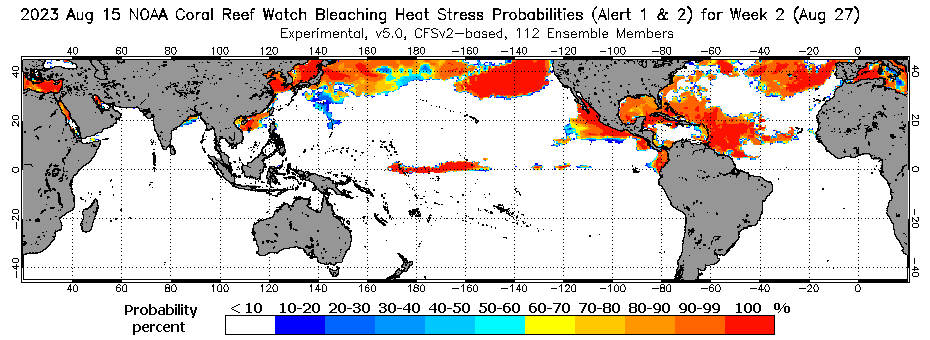
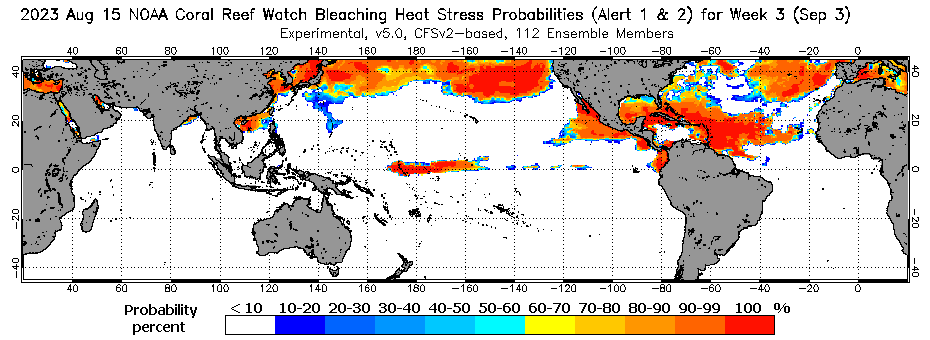

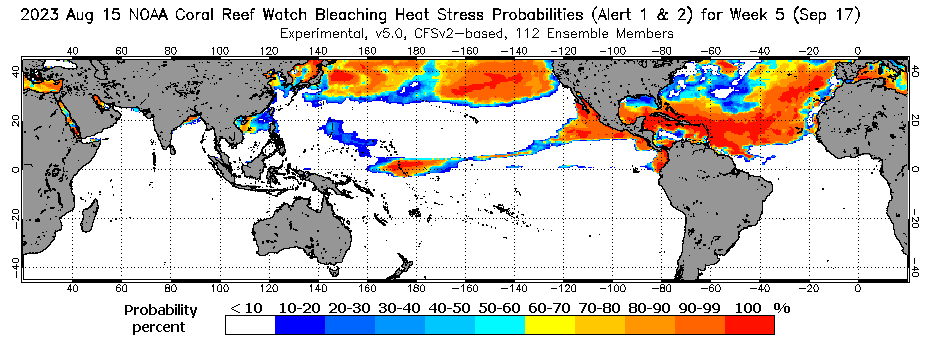
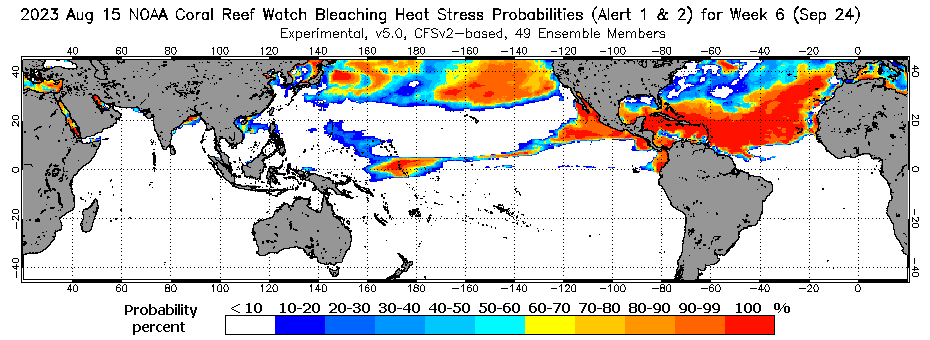
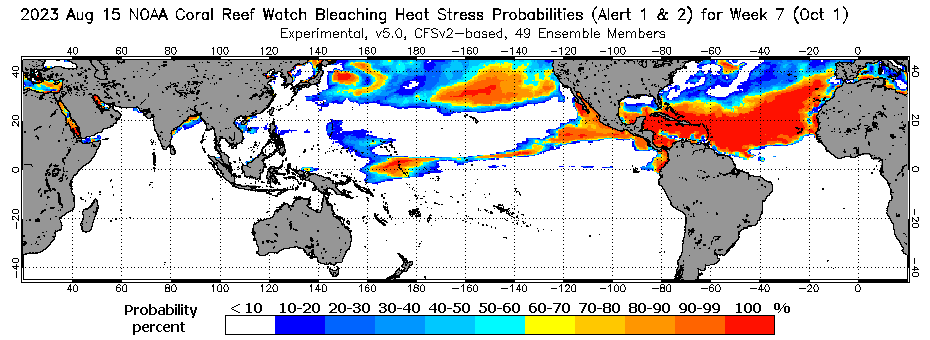


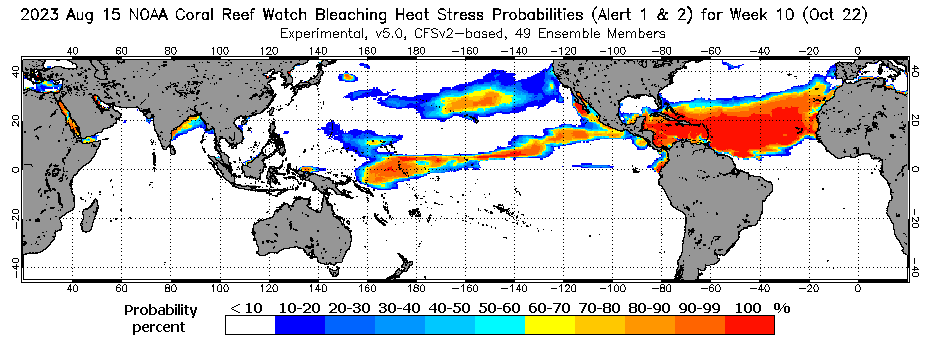

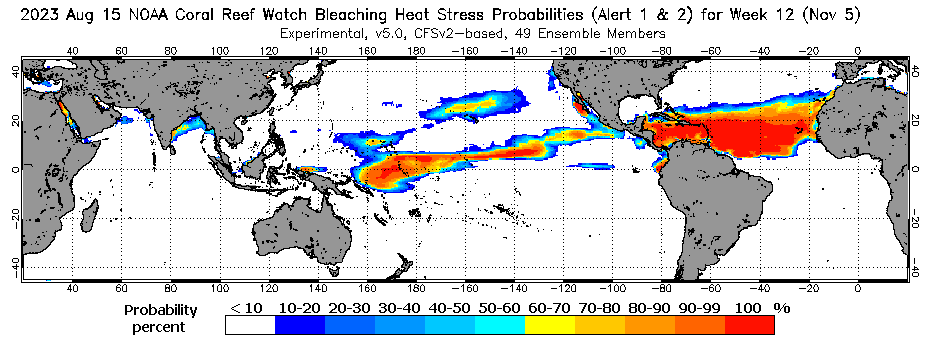

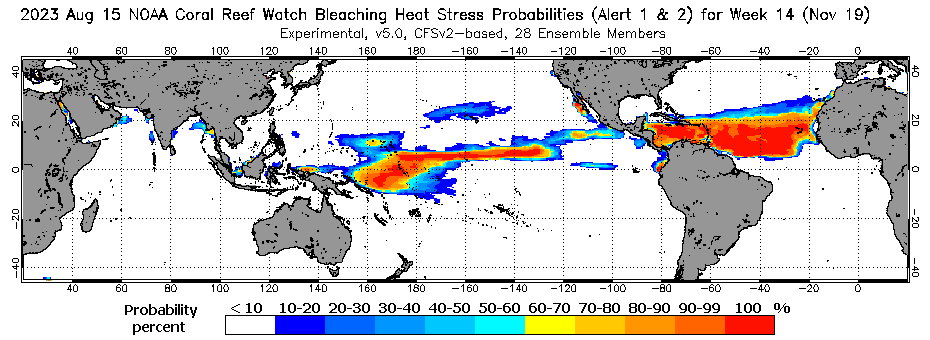
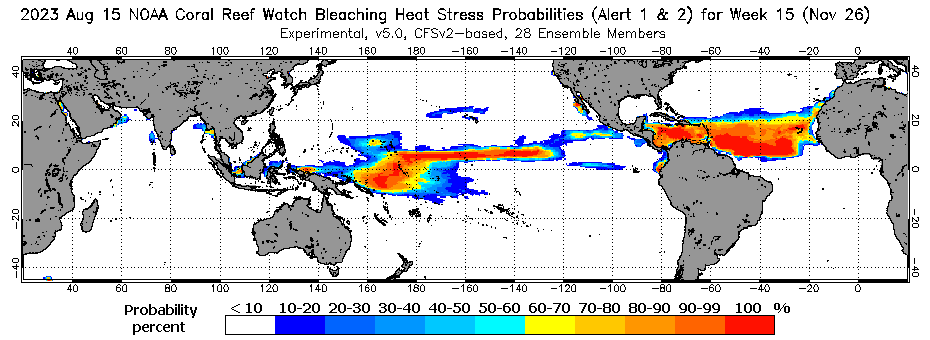

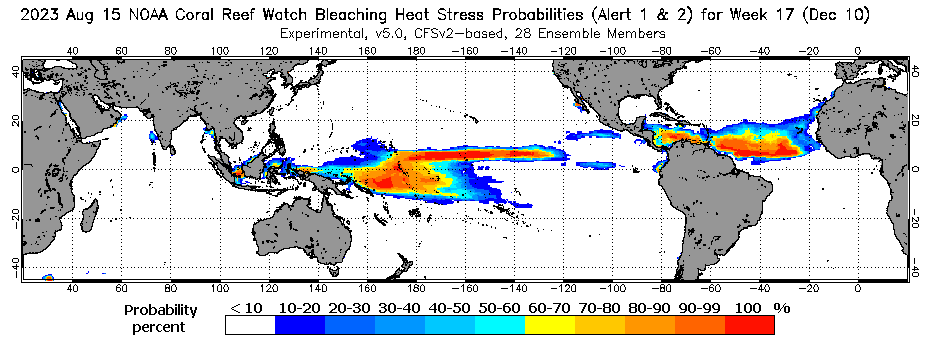

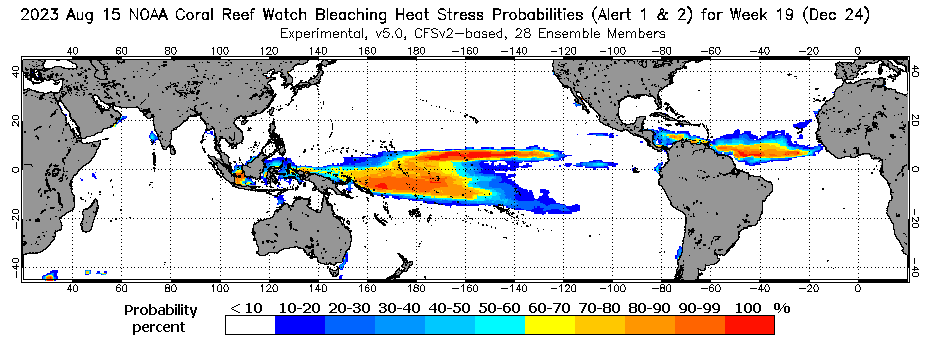

|
Due to limitations in model physical processes, numerical calculations, initializations, and inherent unpredictability of the climate system, the accuracy of forecasts depends significantly on geographic locations and forecast lead-time. For the same geophysical location, the forecast accuracy decreases with increasing lead-time. In general, a model performs better for regions where the processes are controlled by large scale variations; for example, over the central-eastern tropical Pacific Ocean and also the central-eastern tropical Indian Ocean and Caribbean. The skill is relatively high even for longer lead-times in these regions when large-scale climate signals, such as ENSO, prevail. Ensembles (repeated runs of the model using slightly different initial conditions) used in probabilistic forecasts help to increase the chance of capturing the reality among a set of possible future climate patterns generated. CRW's Coral Bleaching Heat Stress Outlook products are based on NOAA's Climate Forecast System (CFS). Assessment of the CFS SST forecast skill is available here. While acknowledging these limitations, longer lead-time predictions are helpful in preparing coral reef stakeholders to understand potential future thermal stress; use it to support effective reef management and conservation decisions; and to communicate with the public and local decision makers. Coral Reef Watch suggests caution in the use and analysis of outlooks, especially with lead-times longer than 20 weeks. |